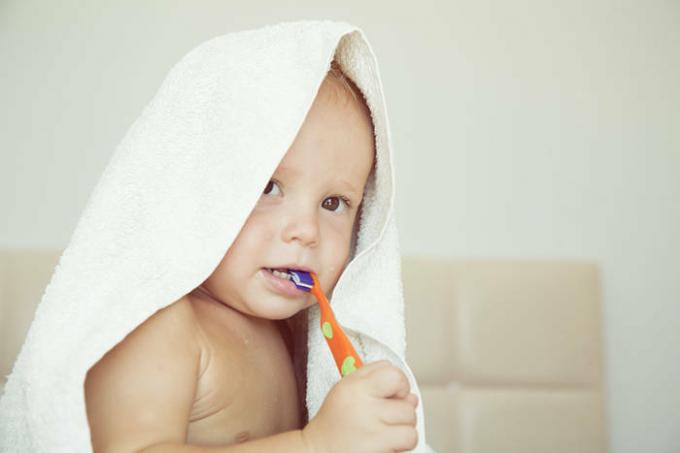Dental health depends partly on genetics, but even more on proper care from the very first tooth.

1. Choose a product by age
Now they produce toothpastes and brushes that are suitable for babies up to one year old. All of them are marked with appropriate inscriptions, it is enough to choose a product that corresponds to the age of your child.
If the baby is still very small and cannot be cleaned with a brush, use a fingertip. And don't be afraid that he will swallow some of the paste - it has a safe composition.

2. Teach you to brush your teeth from infancy
Regardless of age, if a child has at least one tooth, he should get used to brushing this tooth in the morning and evening.
First, you can use a silicone brush, then move on to more familiar ones. But it is important to teach you the process itself and its regularity and obligation.Remember that up to 6-7 years old, only adults should brush a child's teeth.

3. Use an electric brush
The electric brush can be used from 3 years old. Children usually love to brush their teeth with it. It is also easier for parents to cleanse, given that children are spinning, interfering with the brush with their tongue, etc.
The electric brush continues to clean teeth from plaque, even if you barely move your hand, and in general, it performs the desired function much better than usual.

4. Read the composition of the paste
There must be abrasive particles in the toothpaste - they help to remove plaque. But if the composition contains calcium carbonate or sodium bicarbonate, such a paste should not be applied to children's teeth. These substances are very corrosive and can damage the enamel. At the same time, titanium dioxide and silicon dioxide are suitable for children.
Also, avoid Sodium Lauryl Sulfate (SLS) toothpastes. Moreover, for adults, it is also harmful: it damages and dries up mucous membranes, causes allergic reactions.
5. Use correct strokes to clean
Often in advertisements, you can see that children and adults brush their teeth in horizontal movements - brushing them left and right. But this is wrong: the movements must be vertical and "sweeping". Horizontal movements do not get rid of plaque well and strongly erase enamel.

6. Visit your dentist regularly
From the appearance of the first 4 teeth, you can already start visiting the dentist at intervals of every six months. If your child has caries, you may need to walk more often.
It is important to properly set yourself up and your baby to visit the doctor: do not be nervous yourself, do not shake, do not tell stories about personal experience and that in your childhood everything was "much worse", do not escalate, do not scold and never frighten the child visiting a doctor.If you begin to calm the child in advance, saying that "it won't hurt", "just don't be afraid" - this will cause the opposite effect.

7. Don't let it go
If the child is one and a half years old and he still does not allow himself to brush his teeth normally, it is time to contact a specialist so as not to start the situation. Find a clinic with good pediatric dentists who can win over toddlers.
It is important not to wait until the child "grows up and realizes" - you can wait for big dental problems.
You will also find it helpful to read:
- how dentists deceive us
- how to make your visit to the dentist enjoyable
- 10 golden rules for dental care



